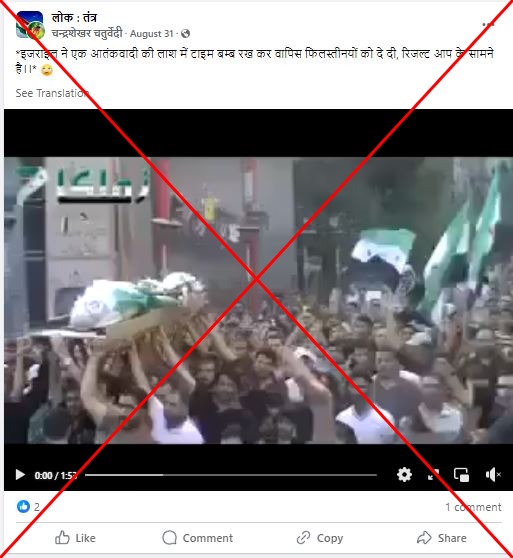As violence escalated in Gaza, a significant amount of misinformation began circulating online, particularly a graphic video from 2012 that depicted a car bomb blast at a funeral procession in Syria. This footage, previously associated with a deeply tragic incident near Damascus where many lost their lives, was misattributed in various social media posts claiming it was an attack on Palestinians during the current Israeli assault. Numerous individuals on platforms like Facebook and X falsely claimed that Israel had planted a bomb in the body of a deceased Palestinian terrorist, which supposedly led to the explosion shown in the footage. Such misrepresentations have been particularly noticeable in India, where public sentiment has recently leaned toward supporting humanitarian aid to Palestinians amidst the conflict.
In trying to address the humanitarian crisis instigated by the violence that erupted on October 7, 2023, and led to a significant Israeli military offensive, fact-checkers like AFP quickly identified the true nature of the viral video. The footage in question originally emerged from a tragic event that took place back in June 2012 during the Syrian Civil War. During a funeral procession for an activist in the town of Zamalka, a car bomb exploded, resulting in mass casualties. AFP was able to trace the video through various sources, emphasizing that the original context had been completely obscured in its virality and subsequent misinterpretations.
Further investigation revealed that the prominent details in the video could be corroborated through image matching technology, which helped to pinpoint the event as a notable incident during the Syrian conflict. The footage was identified across various platforms, including DailyMotion and YouTube, where it had been archived under the context of the 2012 bombing incident. Multiple elements, such as the chants heard in the background and the flags visible, further confirmed its true origins, highlighting the Syrian dialect and symbols representative of Syrian rebel factions opposed to Bashar al-Assad’s regime.
Al Jazeera and other news outlets also reported on the attack during its occurrence, detailing how an explosive device targeted the funeral of activist Abdul Hadi Al-Halabi, further underscoring the established narrative around the event prior to its recontextualization on social media. Estimates from that time indicated that around 80 individuals were killed in the blast, an indication of the real impact of violence in conflict zones, which is often lost in translation when such visuals are repurposed in online discourse.
The negative repercussions of misinformation during the ongoing conflict in Gaza highlight the critical role that factual reporting and social media literacy must play. With world leaders, including Indian Prime Minister Narendra Modi, condemning violent acts on both sides and advocating for humanitarian assistance, the need for accurate representations of events is more crucial than ever to maintain a balanced perspective in the media narrative that shapes public opinion.
In summary, the manipulation of sensitive visual content not only misleads the public but can also inadvertently complicate the international community’s response to humanitarian crises. As seen with the widely shared 2012 footage mistaken for depicting events in Gaza, the ongoing conflict stimulates a flood of misinformation that requires rigorous fact-checking processes to ensure the integrity of information and the protection of civilians caught in these conflicts. The continuous struggle for truth in reporting must meet the challenges posed by rapid misinformation on social media platforms to foster a more informed global understanding of these humanitarian crises.

